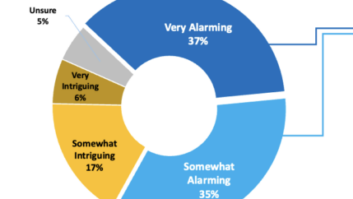In the on-going debate about how to help AM station owners, a visit this week to the FCC by iHeartMedia + Entertainment EVP Engineering & Systems Integration Jeff Littlejohn sheds light on how one station owner thinks about handling skywave protections.
Relaxing protections put into place to protect the skywave for Class A stations in order to help smaller class AMs performance has been part of the myriad of proposals broached by the FCC in its AM revitalization initiative.
Of the rulemaking that started in 2013, Chairman Tom Wheeler said at the recent NAB Show the agency would release a Report & Order on AM soon and the commission would “adopt specific measures to address practical problems and interference-related issues that have long plagued AM stations.”
A further notice would invite comment on an expansion of day/night service for AMs that serve small markets while protecting the core service areas of Class As. This was interpreted to mean some sort of rollback of skywave protection by AM station owners speaking at the April show.
In a meeting that included Media Bureau Chief Bill Lake, Audio Division Chief Peter Doyle and other FCC staff, Littlejohn noted that iHeart accessed Nielsen’s National Regional Database of diary and Portable People Meter ratings to see how many potential listeners a Class A could lose if the skywave protections were lowered to those equivalent for a Class B.
The NRD allows Nielsen clients to capture listening outside the standard market definitions.
The study showed about 600,000 existing listeners of Class As account for 3 million+ hours of listening per week, would potentially lose service if skywave protections were relaxed, according to an ex parte filing.
Quality and expensive full-service news and sports programming with reliable coverage is often what drives listeners to Class As, he noted. “National and regional advertisers expect wide-area, multistate coverage, especially at night, from Class A AM stations, so that the loss of listeners outside of standard Metro areas would undercut the profitability of Class A stations and reduce the ability to continue the high-quality programming expected by their audiences,” according to the meeting summary.
AMs are losing listeners to FM because of electromagnetic interference on the band. If current protections were relaxed, interference to higher class AMs stations would likely rise. As an example, Littlejohn cited what happens when Class Ds don’t turn off their signal at night. The resulting co-channel interference “is a bass-tone ‘beat’ frequency hum that interferes with the quality” of the signal of the nighttime-authorized AM station.
At the same time, getting new listeners by improving the AM signal is difficult. He told the FCC personnel that iHeart invested in a signal upgrade at an AM in Boston and “procured expensive programming,” but did not gain “significant additional audience.”
Should the commission decide to open an FM translator application window for AM owners, all AMs should be able to take part, because all classes of AMs have coverage issues, according to the iHeart engineer.
As for all-digital AM, only experimental efforts should be considered, he said, noting that recent experiments have “raised concerns about increased interference.” Littlejohn was referring to test results presented at the NAB Show.
We’ve reported field driving tests for nine stations have been completed, and the association’s technical staff indicated the all-digital AM signal is more robust and immune to noise and interference than the current hybrid signal, however all-digital AM coverage is highly dependent on co- and adjacent-channel interference. Nighttime performance also needs more thorough study.











